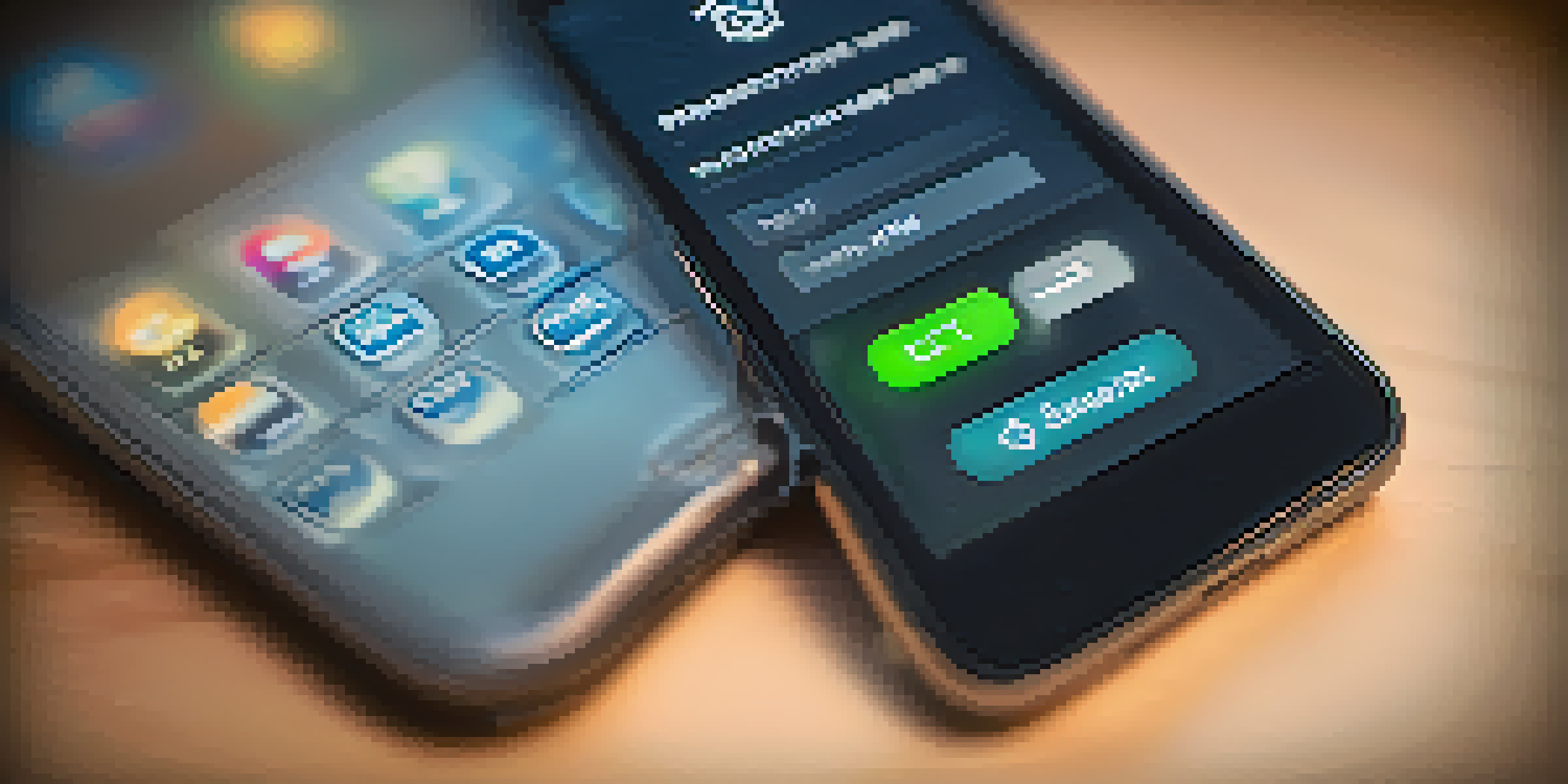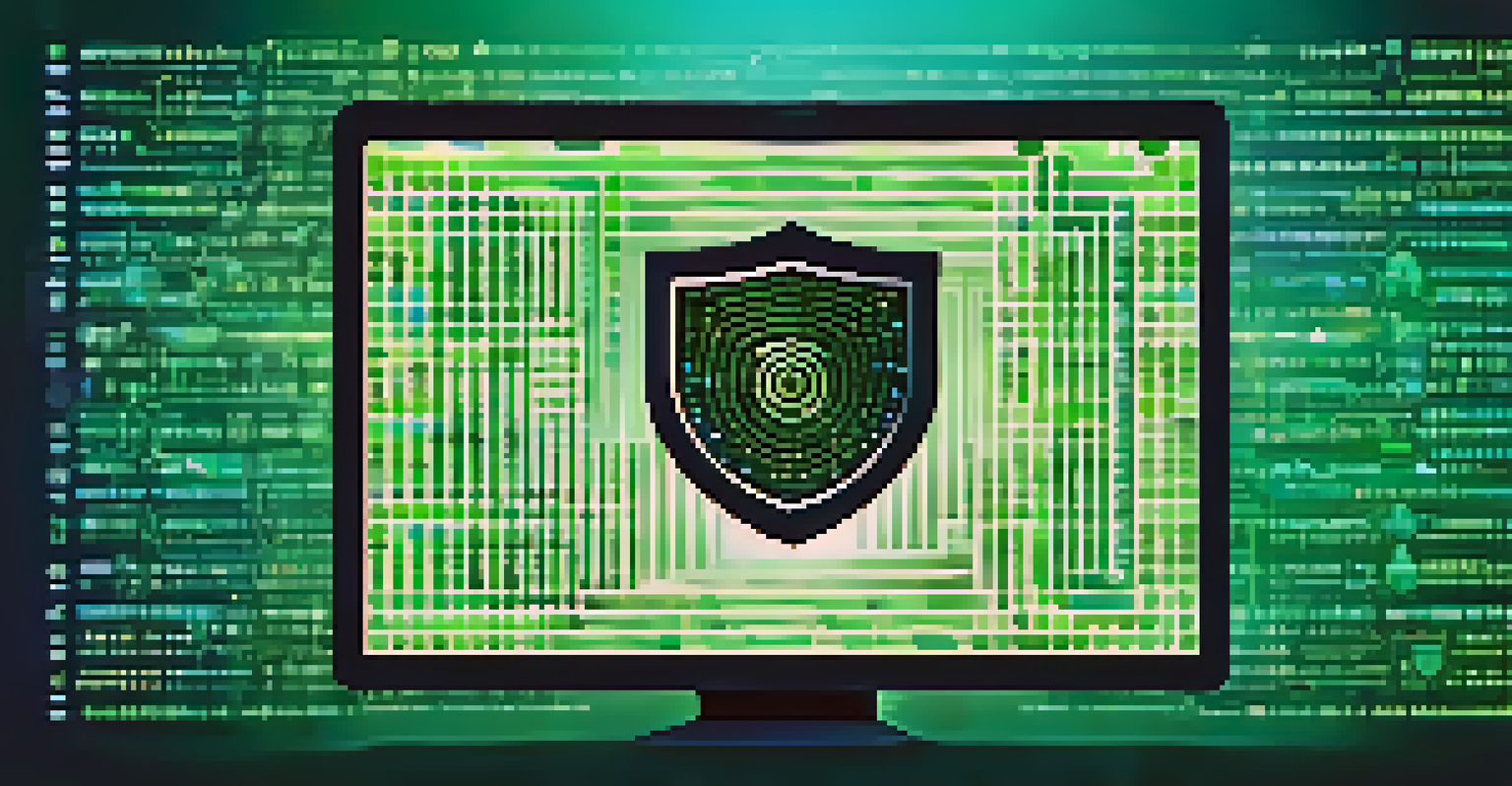The Importance of Multi-Factor Authentication in Cybersecurity

What is Multi-Factor Authentication (MFA)?
Multi-Factor Authentication, or MFA, is a security process that requires users to provide two or more verification factors to gain access to an account. This method adds an extra layer of protection beyond just a username and password. Think of it like needing both a key and a code to unlock your front door—it's about making sure that even if one method is compromised, your security remains intact.
Security is not a product, but a process.
MFA typically involves something you know (like a password), something you have (like a smartphone), and something you are (like a fingerprint). By combining these factors, the chances of unauthorized access significantly decrease. It’s a straightforward yet effective way to safeguard sensitive information.
In a world where cyber threats are constantly evolving, MFA serves as a crucial defense mechanism. It’s not just about keeping intruders out; it’s about ensuring that your personal and professional data remains secure and protected from prying eyes.
Why is MFA Necessary in Today’s Digital Landscape?
The necessity of MFA stems from the increasing frequency of cyberattacks. With data breaches making headlines almost daily, relying solely on passwords is no longer sufficient. Cybercriminals have become adept at stealing passwords through phishing, brute force attacks, and other methods, making it imperative to implement additional security measures.

Consider this: a recent survey indicated that over 80% of hacking-related breaches involved weak or stolen passwords. This statistic underscores the vulnerability of traditional security methods. By adopting MFA, you not only bolster your defenses but also deter potential attackers who might otherwise target your accounts.
MFA Adds Extra Security Layers
Multi-Factor Authentication (MFA) enhances security by requiring users to provide multiple forms of verification, making unauthorized access significantly harder.
Furthermore, many organizations are now required to implement MFA to comply with regulations and standards. This push for enhanced security is not just about protecting individual users; it’s about safeguarding entire systems and networks from devastating breaches.
How Does MFA Enhance Security?
MFA enhances security by requiring multiple forms of verification, which makes it significantly harder for unauthorized users to gain access. For instance, even if someone manages to steal your password, they would still need access to your second form of identification, such as a temporary code sent to your phone. This added complexity creates a formidable barrier against intruders.
The best way to predict the future is to invent it.
Moreover, MFA can adapt to the risk level of a situation. For example, if you try to log in from an unfamiliar device or location, the system might prompt for additional verification. This dynamic response to potential threats ensures that your security measures are always aligned with the context of the access attempt.
Ultimately, the implementation of MFA shifts the odds in your favor. By layering security protocols, you reduce the risk of unauthorized access and protect your sensitive information more effectively than with a password alone.
Common Types of Multi-Factor Authentication
There are several types of MFA, each offering various levels of security and convenience. One common method is SMS or email verification, where a code is sent to your mobile device or email that you must enter to complete the login process. While this is widely used, it’s worth noting that SMS can be vulnerable to certain attacks, so other methods may be more secure.
Another popular option is the use of authenticator apps, such as Google Authenticator or Authy. These apps generate time-sensitive codes that are more secure than SMS, making them a preferred choice for many users. They offer a balance of convenience and security, as you always have access to the app on your device.
Cyber Attacks Demand MFA
With the rise in cyberattacks and data breaches, implementing MFA has become essential to protect sensitive information beyond just using passwords.
Biometric authentication, which includes fingerprint and facial recognition, is also gaining traction. These methods rely on unique physical characteristics, making it incredibly difficult for anyone but you to access your accounts. As technology evolves, MFA continues to adapt, providing users with innovative ways to secure their information.
Challenges and Limitations of MFA
While MFA is a powerful tool for enhancing security, it’s not without its challenges. One common limitation is that users may find the process cumbersome. Entering multiple forms of verification can feel tedious, leading to frustration, especially if they’re in a hurry. This user experience factor is something organizations must consider when implementing MFA.
Additionally, some users may not have access to the necessary devices for MFA, such as smartphones or biometric scanners. This can create accessibility issues, particularly for those who prefer using traditional login methods. Organizations need to strike a balance between security and user convenience to ensure widespread adoption of MFA.
Finally, there’s the risk of users opting for less secure methods out of convenience. For example, if a user can choose between SMS verification and a more secure option like an authenticator app, they may default to SMS, unknowingly compromising their security. Educating users about the importance of choosing the most secure methods is essential.
Best Practices for Implementing MFA
To successfully implement MFA, organizations should start by assessing their specific security needs and the types of data they are protecting. Not all data is created equal; sensitive information requires stronger security measures. Once the critical areas are identified, organizations can tailor their MFA strategies accordingly.
Educating users is also paramount. Providing training sessions and materials can help them understand how MFA works and why it’s important. The more informed users are, the more likely they are to embrace MFA as a necessary part of their online security routine.
User Education is Crucial for MFA
Educating users about the importance and functioning of MFA is vital for its successful implementation and widespread adoption.
Lastly, organizations should regularly review and update their MFA solutions. As technology advances, so do the tactics of cybercriminals. Continuous improvement and adaptation of MFA practices ensure that security measures remain effective against emerging threats.
The Future of Multi-Factor Authentication
As technology continues to evolve, so too will the methods of authentication. The future of MFA may see the integration of more advanced biometric options, such as voice recognition and behavioral analytics. These innovations could make authentication even more seamless while enhancing security.
Additionally, the rise of artificial intelligence (AI) may play a significant role in MFA. AI can help identify patterns in user behavior, allowing for adaptive authentication measures that respond in real time to potential threats. This level of sophistication could revolutionize how we approach online security.

Ultimately, the key takeaway is that MFA will remain a vital component of cybersecurity strategies. As threats become more sophisticated, embracing the evolution of authentication methods will be essential in protecting sensitive information in the digital world.